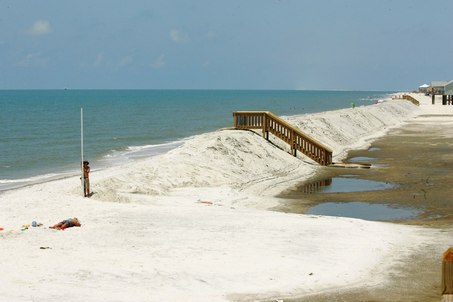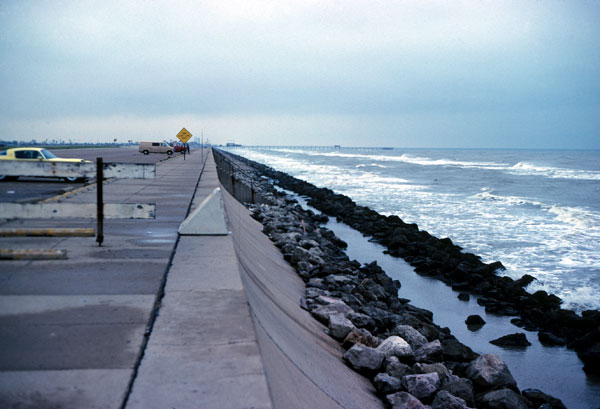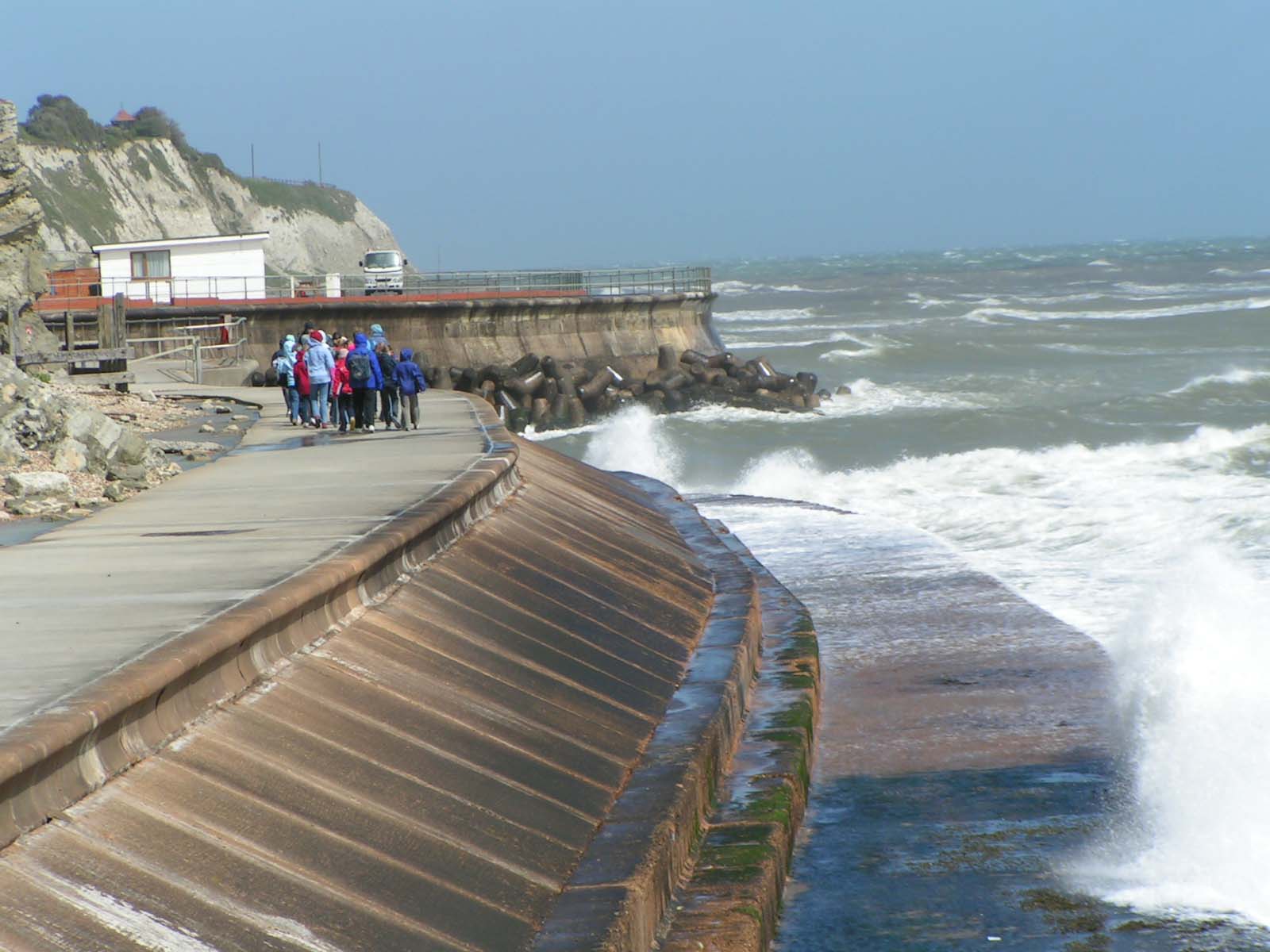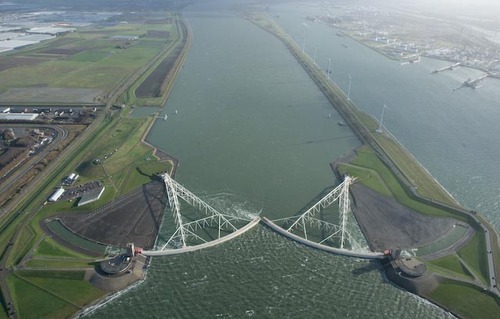Policy Options
Strategies for Adaptation
Retreat

Retreat, or relocation, is an adaptation strategy that manages expectations of future sea-level rise. This option typically involves long-term planning with expectations of future sea-level rise to avoid the costs of investing in protective shoreline solutions. Important facilitators of this option include regulatory and legal mechanisms by which to incentivize citizens, businesses, and government alike to consider a managed retreat. These may include buyout programs, conservation easements, acquisition programs, or flood hazard regulations.
More information can be found here. This is also the source of Figure 6.8 above.
Protection
Protection strategies are typically referred to as "hard" engineering solutions because they can involve building capital-intensive, semi-permanent structures. Protection also includes semi-permanent options such as berms (see image below to the right) that use materials from the earth to build defensive structures.Listed below are four options that the City of Olympia has considered as part of their Engineered Response to Sea Level Rise Technical Report (2011)

Armored Slope Earthen Berm: This berm is similar, but with an armored layer on the slope facing the coastline made from other materials such as concrete.
Sheet Pile: These are piles of various materials including timber, steel, or concrete built to resist lateral pressures from the earth or incoming water.
Other Protective Options
Seawalls

Advantages
Strong increase in coastal defense
Can be engineered to incorporate multiple uses such as sightseeing or recreation space on top of it
One of the longest lasting compared to other engineering options, even in increasingly extreme environments
Effectively control soil erosion and prevent the loss of life and property

Disadvantages
High capital costs
Can change shoreline experience for citizens and business owners with obstructions of view
Potential to destroy natural formations near the shoreline such as intertidal beaches and wetlands
Lifespan can be anywhere from 30 to 50 years depending on the materials used to build it and the intensity of the environment
(Picture from climatetechwiki.org)
(Return to top)
Revetments
 Revetments are fortifying structures
designed to absorb energy of incoming water.They are
typically constructed as sloped areas of loose piled
rocks, wooden structures, or piles of concrete shapes.
Revetments are fortifying structures
designed to absorb energy of incoming water.They are
typically constructed as sloped areas of loose piled
rocks, wooden structures, or piles of concrete shapes.(Picture by Evelyn Simak)
Advantages
Strong,low-cost solutions for coastal erosion defense
Protection against flooding, heavy rainfall, and continual impacts of water at high forces
Disadvantages
Revetments are a hard engineering solution with a lifespan of 30 - 50 years
Their semi-permanent nature alter the landscape of the shoreline with the potential to appear aesthetically unappealing to many
Storm Surge Barriers, Dams, Sluices, and Ship Locks
Oosterscheldekering

(Images: Bryan
Tong Min (left) and Bus-Idee
(right))
The Oosterscheldekering is a storm surge barrier in the
Netherlands that was initially built as a dam. Public opinion
drove the addition of large sluices placed throughout the
barrier that can be controlled to lift or shut depending on
the severity of incoming sea-level rise threats.It is the
world’s largest movable flood barrier.
Thames Barrier
 (Picture
by David Iliff.
(Picture
by David Iliff.
License: CC-BY-SA 3.0)
The Thames Barrier in the UK, the world's second largest
movable flood barrier, was primarily designed to prevent
flooding and storm surges from impacting the vulnerable
floodplains of the boroughs of Greater London. This barrier
has rotating cylindrical gates that can be raised or lowered
in the event of sea-level rise threats from the North Sea.
This barrier incorporates some flood gates that are permanent
in nature and some that can be navigated by ships when open.
Maeslantkering
 The
Maeslantkering is another storm surge barrier in the
Netherlands with a unique design that allows it to swing
closed if storm surges are imminent or swing open to allow
water and ships to pass.
The
Maeslantkering is another storm surge barrier in the
Netherlands with a unique design that allows it to swing
closed if storm surges are imminent or swing open to allow
water and ships to pass.
(Picture by www.aerolin.nl)
Contact: peter (at) stat.washington.edu